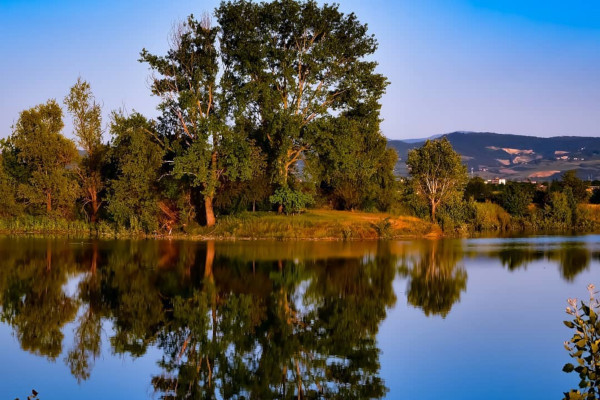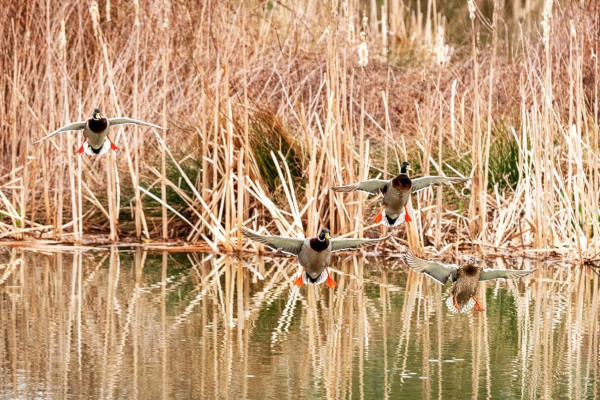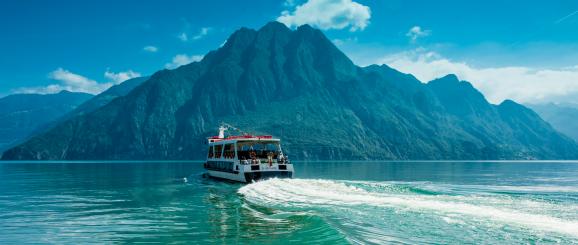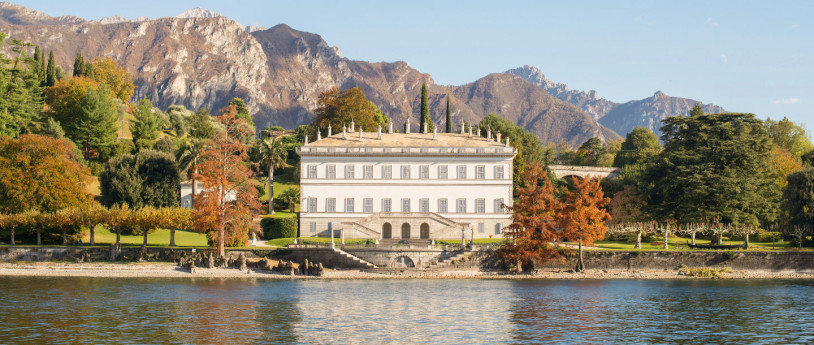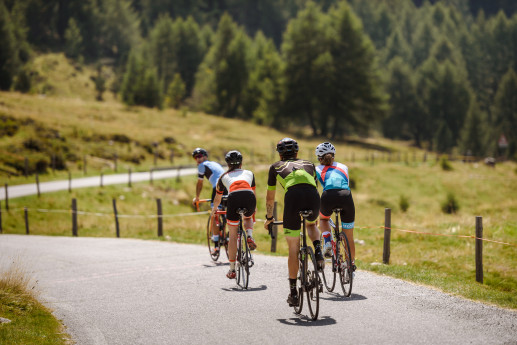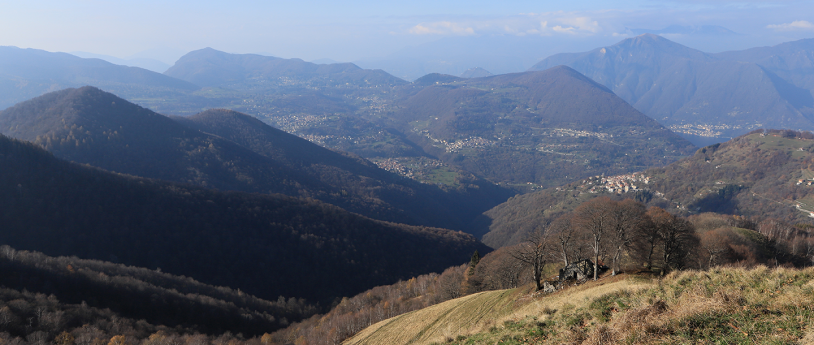- Active & Green
Birdwatching in Lombardy
Parks, nature reserves and oases where you can take a glimpse into the secret lives of birds
Discover Lombardy's birdlife on a journey that takes you through woodlands, across rivers, marshes, rushlands and up into the mountains.
Observing birds in their natural habitat is a passion that can captivate adults and children alike, bringing them together in the joy of discovering infinite species, getting to know their behaviour and even recognising the different species that winter in Italy during their migration. Here is how and where you can dedicate yourself to this fascinating activity in Lombardy, a region that offers a wide variety of habitats, which are ideal for many animals.
Where to go birdwatching in Lombardy
The morphology and variety of the Lombardy region is truly unique, from plains, hills and mountains, broadleaved woodland and Apennine flora, onto lakes, rivers and babbling brooks, brackish marshes and freshwater wetlands, canals, peat bogs and springs. In fact, there are so many of these special geographical areas that the region has established 66 natural reserves to date - in addition to 3 state-managed reserves - which include the main environmental typologies, located in alpine, prealpine and Apennine areas and in plains, such as the stunning wetland area of San Francesco, south of Lake Garda.
There are just as many spectacular sights, including the oases managed by LIPU, the Italian Bird Protection League - which manages some 7,000 hectares of natural habitat, home to more than 300 bird species alone -, which are observable across the seasons. Many of these oases are breeding sites for certain protected species, given they are currently considered endangered, such as the white stork, the Egyptian vulture, Eleonora's falcon and several duck species.
Become the perfect birdwatcher!
Around 800 bird species live in the region encompassing Europe, North Africa and the Middle East; 450 of these frequent Italy and are nesting birds, which mate in Italy or winter here during the cold and migratory season. Learning how to recognise and identify them is quite a challenge, but not impossible! You need to study their form, the colours of their plumage, their flight and habits, as well as their calls and songs. To get started in this fascinating experience, all you need are two essential tools.
First and foremost, you need to equip yourself with a pair of binoculars, which should be selected based on weight, durability and light penetration through the lens. It is important that the ratio between the magnification of the ocular lens and the diameter of the objective lens (mounted on each pair of binoculars) is within a range of 8 x 40 and 10 x 50. You then need a guidebook for spotting the birds. It's best to use a small, manageable guidebook, preferably with drawings and rich in detail (such as differences between the males, females and young of a species and comparisons between species that look similar, etc.). In order to recognise the species present in Italy, grouped by habitat, the LIPU has created a free downloadable guide.
Finally, don't forget a notebook to jot down notes, such as geographical coordinates and your observations. Over time you will become expert at recognising the elective habitats of the various species and their migration phenology, that is to say, when a certain bird returns to your favourite observation point.
From parks to nature reserves
Let's get started with your virtual birdwatching tour, choosing a magical location: the San Francesco wetlands area, a natural monument spanning some 7,000 m2, and located within striking distance of Desenzano del Garda. Here the woods shelter resident and migratory birds, while rivers and rushlands protect the wildlife and biodiversity. Coots, grebes, little grebes, cormorants, gulls, tufted ducks, common pochards and common moorhens winter here. Purple herons and rare species such as the red-crested pochard have chosen the oasis to nest and breed.
Moving on towards Mantova, Mincio Park is another one of the best places to observe birdlife. The rivers, hills, canals, ponds and rushlands are the ideal habitat for little cormorants and European shags, which flock to the Vallazza and Valli del Mincio nature reserves. In the autumn, heron join the many marsh-dwelling species already present in the area. There are two observation posts: a small building at Chiavica del Moro and a natural barrier at the rushlands area at Rivalta sul Mincio.
Still in a lakeland environment, the Bruschera and Canneti del Lago Maggiore oases, with their lowland Poplar areas, are a refuge for dozens of protected species. The bird species found here include: woodpeckers, falcons, grey and purple herons, great white herons, coots, grebes, common moorhen and other resident and migratory birds.
Riding horseback between the provinces of Como and Sondrio, you can reach the huge Pian di Spagna-Lago di Mezzola Nature Reserve (covering 1,586 hectares), which is famous for the rich diversity of its ornithological life. It has a strategic location, being one of the main alpine and prealpine migratory routes and the ideal wintering location for European birdlife. Some 268 bird species can be observed within this area, including nesting and migratory species and rare species such as the black-winged stilt, the common redshank, the wood sandpiper, the blue throat and the extremely rare Lapland longspur.
The Torbiere del Bassone di Albate nature reserve, managed by the WWF, is also located close to Como. At its heart is the marsh with rushlands, mirror-like expanses of water and wet woodland. Some 200 species have been counted here, many of which are nesting birds, thanks to the rich diversity of the environment. During the migratory season, you can enjoy some of the most interesting encounters, including the sedge warbler, the European pied flycatcher and various species of chiffchaff.
Moving on to Oltrepò Pavese, in the vicinity of Po and the Appennines, the famous Parco delle Folaghe is an ideal stopover for migratory birds thanks to the former quarries, which were used to extract clay, and are now flooded with groundwater. At least 260 species have been observed here. Among the most frequent visitors are the whiskered tern, the Pacific golden plover and the Eurasian dotterel. Make sure you don't miss the corn crake, also known as the "king of the quails"!
In the protected oases
There are six LIPU oases in Lombardy, which have all been specially equipped for birdwatching. The Ticino Valley Regional Park, near Pavia, plays host to the Bosco del Vignolo and Bosco Negri oases, an area rich in woodland and wet areas containing springs and which are considered sites of special scientific interest. Both offer rich and varied birdlife: tits, winter wrens, golden orioles, cuckoos, jays, herons, ducks, moorhen and common kingfisher. In the spring, you can hear the tap-tapping of the woodpeckers (the great spotted woodpecker and the European green woodpecker) and the calls of the Eurasian hobby, small birds of prey.
In the winter, buzzards and hen harrier circle above while dunnocks and chaffinches keep out of sight in the bushes. Moving eastwards, close to Cremona, the Oasi Lancone is home to several species of marshland and migratory birds, thanks to a habitat comprising rushland. Some of the most common bird species nest in this location, as well as rarer species such as the purple heron, Western marsh harrier and reed warblers. In the winter and during the migratory season, ducks and birds arrive from all over Northern Europe.
Heading northwards in the Lombardy region, the Oasi Palude Brabbia rises out of a former peat bog that has become a nature reserve, which offers various trails and observation posts, including a small boat that takes you across the water to a floating cabin. At least 160 bird species have been recorded here and the marshland is home to around one hundred pairs of herons. A ringing station is located here, in order to monitor and track the birdlife.
Just a stone's throw from Milan, the Oasi di Cesano Maderno, located in the Parco delle Groane, is a rare example of a protected metropolitan area. It is characterised by "fossi di groana" (moorland moats) in the woods, which teem with life when they fill with rainwater. The most typical bird species in this area are woodpeckers and other woodland species, as well as diurnal birds of prey such as the European honey buzzard, which builds its nests on the moorland plains.
Finally, there is the area occupied by the Palude Ostiglia nature reserve, in Mantova. Around 180 species have been identified in this area, 60 of which are nesting species, such as the purple heron, the little bittern and the black-crowned night heron. In addition to birds of prey and numerous aquatic species, the common reed bunting is the reserve's symbol.
City encounters
To get up close and personal with bird behaviour, you don't even need to leave the city: we live among pigeons, doves, blackbirds, sparrows, robin redbreasts, turtle doves and many other bird species all year round. In Milan, Gio and Giulia, a pair of Peregrine falcons, have been nesting right at the top of the Pirelli Tower since 2017. In April, the webcam that observes them 24/7 broadcast the laying, incubation and hatching of three eyases (baby Peregrine falcons), Luna, Gino and Guido, to the residents of Milan. All three are now ready to fly the nest!




